New Engine Helps Smooth Out Most Rough Edges
In the years since Subaru last gave its workhorse flat four-cylinder engine a significant revision, an entire generation of customers has gone from pulling up their Huggies to donning college graduation gowns. More than two full decades have passed since the company's engineers seriously sat down to re-examine the engine's architecture, and in that time, there's been an explosion of automotive technology geared toward squeezing every last bit of energy out of a drop of gasoline. With fuel economy and emissions standards growing tighter by the day, the minds at Fuji Heavy Industries, Subaru's parent company, unveiled the third-generation of their boxer engine recently.
But at first blush, the new heir to the Pleiades throne looks to be little more than a carbon copy of its predecessor. Horsepower, torque and fuel economy figures are all within a shave of the old engine's numbers, and while the company's competitors are investing heavily in direct-injection systems, Subaru passed on this tech all together. Where was the improvement? Judging by the specs alone, we had to wonder why Subaru went through the trouble of building an entirely new facility just to produce what looked to be the same old beating heart we'd known and loved for years. We jumped behind the wheel of the 2011 Forester to find out just what had changed beneath the hood of its all-wheel-drive family hauler.
Continue reading...
2011 Subaru Forester – Click above for high-res image gallery
In the years since Subaru last gave its workhorse flat four-cylinder engine a significant revision, an entire generation of customers has gone from pulling up their Huggies to donning college graduation gowns. More than two full decades have passed since the company's engineers seriously sat down to re-examine the engine's architecture, and in that time, there's been an explosion of automotive technology geared toward squeezing every last bit of energy out of a drop of gasoline. With fuel economy and emissions standards growing tighter by the day, the minds at Fuji Heavy Industries, Subaru's parent company, unveiled the third-generation of their boxer engine recently.
But at first blush, the new heir to the Pleiades throne looks to be little more than a carbon copy of its predecessor. Horsepower, torque and fuel economy figures are all within a shave of the old engine's numbers, and while the company's competitors are investing heavily in direct-injection systems, Subaru passed on this tech all together. Where was the improvement? Judging by the specs alone, we had to wonder why Subaru went through the trouble of building an entirely new facility just to produce what looked to be the same old beating heart we'd known and loved for years. We jumped behind the wheel of the 2011 Forester to find out just what had changed beneath the hood of its all-wheel-drive family hauler.
Continue reading...
Photos copyright ©2010 Zach Bowman / AOL
If you were hoping to see an all-new wrapper announce the arrival of this reworked engine, Subaru has news for you. It ain't happening. The third-generation Forester debuted in 2008, and the vehicle's face and roomy proportions are still quite fresh. To that end, there's little to distinguish the 2011 model from its 2010 counterpart. Up front, the grille and swept headlights work together to create a cohesive look that draws your eye down the side of the vehicle. Details like large insets for fog lights, flared fenders and boxy side-view mirrors help give the Forester more of an SUV flavor than other compact high-riders out there, and while we miss some of the wagon aspects of older Foresters, we have to say this look is plenty becoming, especially when lined up against some of the other designs in the Subaru stable.
Inside, the story is much the same. Hordes of hard, yet well-grained plastics still abound, and while the decorative swath of silver trim helps to brighten the cabin, the cockpit is still a little dark for our tastes. The driver is treated to a well-sorted steering wheel with controls for cruise, hands-free calling and the stereo within reach, and the set of somewhat plain gauges are easy to read day or night. Things become a little muddled in the center stack, however. Our tester came with the optional TomTom navigation system, and its fitment looks aftermarket at best.
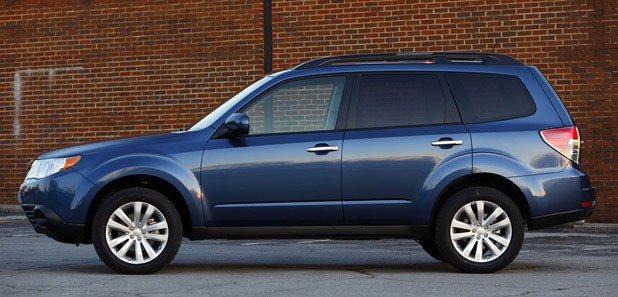
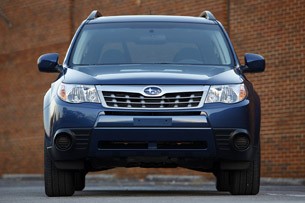
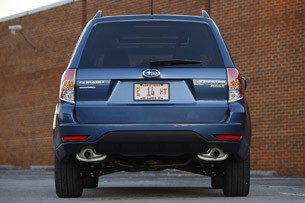
While most everything is well situated and logically laid out indoors, we did have to scratch our heads a bit over the placement of the switches for the heated seats. Located under the arm rest and on the driver's side of the cupholder, passengers have no chance of finding the controls without instruction. While it makes for hilarious bun-warming practical jokes from the driver, a more centrally-situated location would be more user-friendly.
Of course, all of that could easily be said about the 2010 model. The real difference here lurks under the hood. Despite the deceptively similar numbers compared to last year's model, the 2011 Forester uses an engine that's considerably more advanced than its predecessor. The old engine's belt-driven, single-overhead cam design has been replaced with a chain-driven dual-overhead cam setup for better efficiency. The change helped net the engine an extra one mpg in the city on the EPA's cycle. Additionally, the four-cylinder uses a marginally larger bore and longer stroke, tweaking displacement from 2,457cc to 2,498cc and helping to deliver an extra four pound-feet of torque 300 rpm sooner than the old 2.5-liter engine.
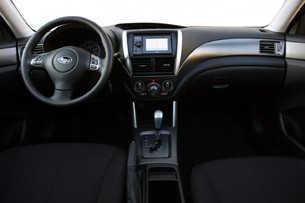

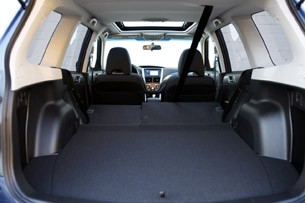
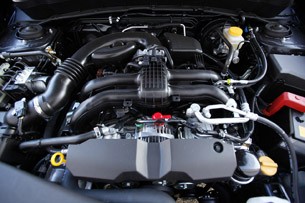
Unfortunately, the new engine is still bolted to the same four-speed automatic transmission that Moses brought down from Mount Fuji. As a result, the new 2.5-liter feels very similar to the old one in terms of acceleration. The slight bump in torque is barely apparent low in the rev band, and the engine still runs out of breath on the deep end of the tachometer. Still, that's not to say that the four-cylinder is identical to its predecessor. The engine is significantly quieter and a galaxy smoother than the last generation boxer four-cylinder. Whereas the 2010 Forester was saddled with the company's characteristically tractor-esque rumble from under the rounded hood, the 2011 hums along with a fraction of the racket. To us, the improvement would have been worth building five factories to accomplish.
Otherwise, miraculously little has changed from last year's model to 2011. The Forester still provides hilariously excellent driving dynamics given its lofty ride height thanks to a pile of DNA borrowed from the lovable WRX. Compared to metal like the Honda CR-V and Toyota RAV-4, the Forester is a grin-maker through any series of twists. Just make sure the groceries are tied down in the rear.
During our week with the Forester, we saw an average of 23.4 mpg in mild-to-aggressive combined driving, landing just a glimmer north of the EPA's 21 mpg city and 27 mpg highway rating. While the Forester 2.5X Premium carries an MSRP of $23,495, our tester came equipped with the $1,095 option package that throws in the TomTom navigation system, heated front seats and windshield wiper de-icer. The archaic four-speed automatic transmission adds another $1,000 to the recipe, and a $725 destination charge brought our final figure to $26,315.
We've had a soft-spot for the Forester since the first generation debuted in 1998, and while we would have liked the third-generation boxer engine bring to bring a little more to the table, the quieter, smoother mill makes for a more pleasant driving experience altogether. For us, the five-speed manual transmission is the logical solution to the old four-speed automatic, at least until Subaru can come up with an automatic gearbox to keep pace with its new engine architecture. With its surprising poise, copious cargo room and ample passenger space, the Forester still makes an excellent alternative to hordes of Novocain CUVs out there.
Photos copyright ©2010 Zach Bowman / AOL
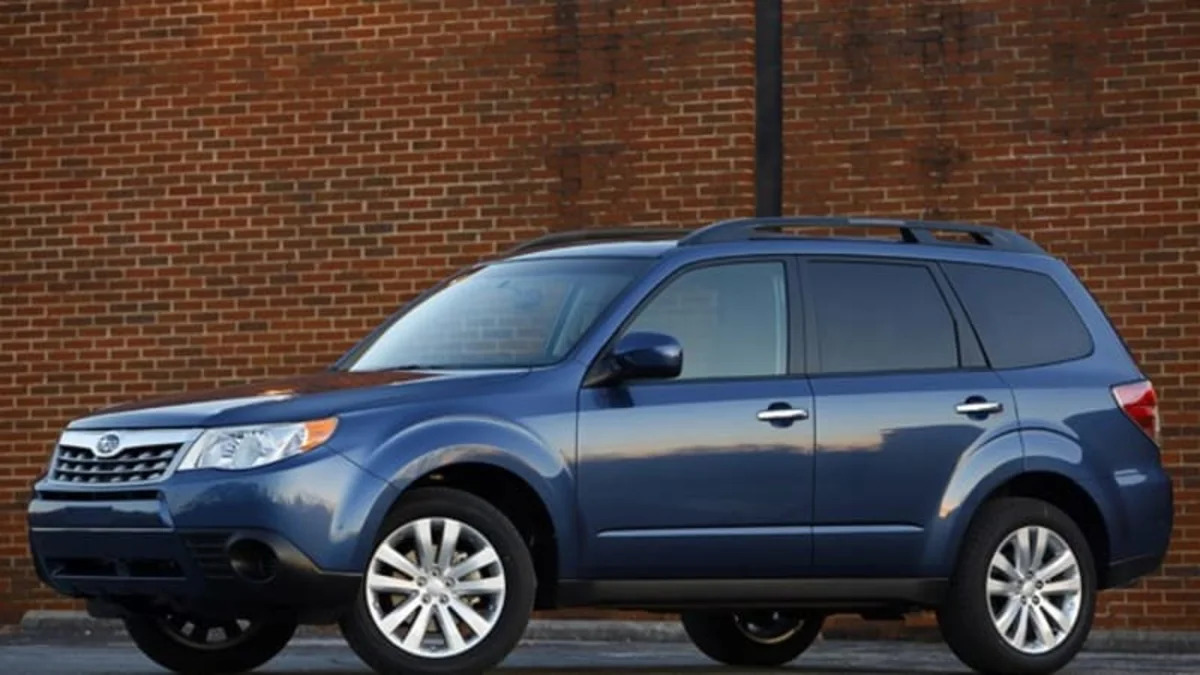

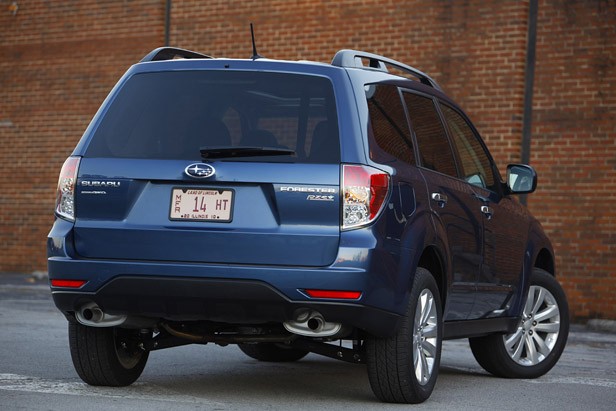
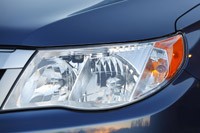
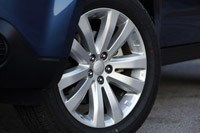
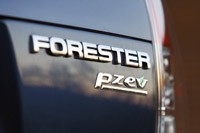

Sign in to post
Please sign in to leave a comment.
Continue